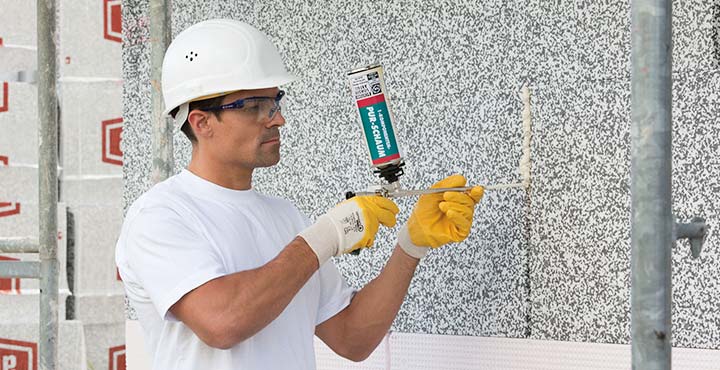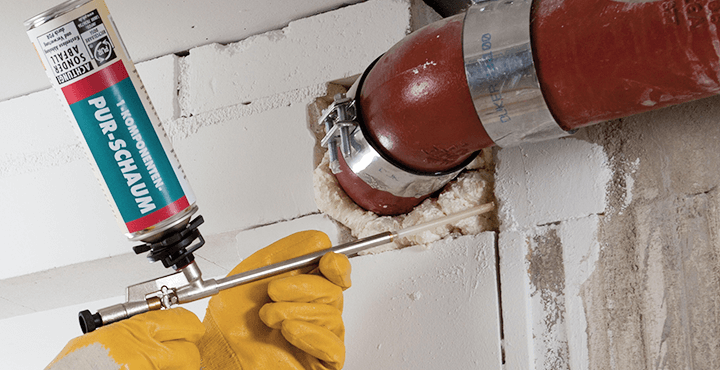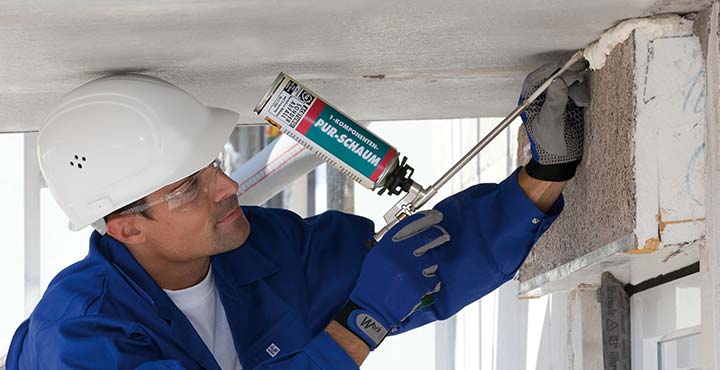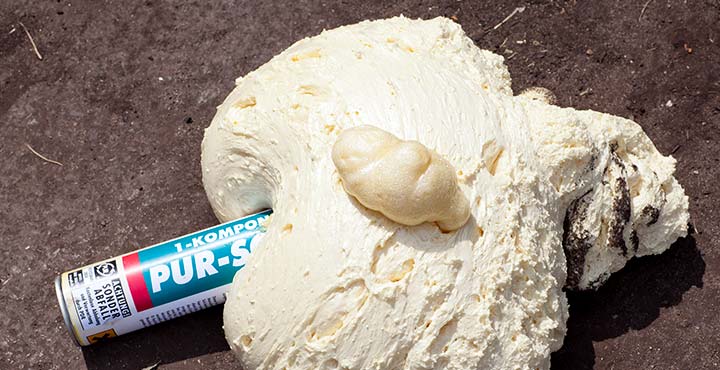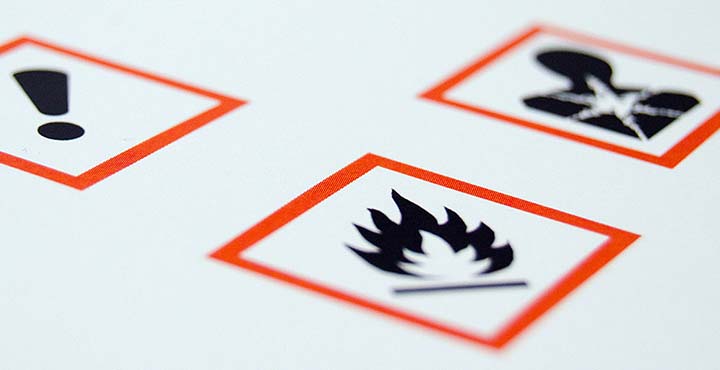
Questions about the product
What are the advantages of PU foam?
How much cheaper is it to use PU foam compared to mineral wool?
How good are the thermal protection and the insulation value of PU foam?
Where can I find PU foam that works at temperatures of - 25°C?
What is the difference between 1C PU foam and 2C PU foam?
What are fire protection foams?
Does PU foam continue to insulate correctly, even if it is exposed to UV radiation for a longer time?
Is PU foam as hard as concrete?
Is it possible to install a window simply using PU foam?
How much does PU foam expand after it has been applied?
What are the advantages of PU foam?
One of the greatest advantages of PU foam is its excellent insulating properties. Also, PU foams in pressurised cans are easy to use and very mobile. You can use PU foam cans to insulate, seal and fill window joints in one work step after the window has been attached mechanically. As PU foam continues to expand after it has been applied, it can also fill irregularly shaped joints reliably. This is very important especially in the sanitation field. If the work is carried out with the necessary level of care, the result is a well-insulated, draught-free yet breathable connection. This makes insulated joints energy efficient and contributes to climate protection. Also, PU foam is permanently resistant to mould, damp, bacteria and many alkalis and acids.
How much cheaper is it to use PU foam compared to mineral wool?
Cost comparison for thermal insulation of a typical window installation situation
What average costs are generated when insulating a window joint with PUR foam, and what are the costs of using mineral wool? This was the central issue addressed in the expert report by Prof. Klaus Layer, expert at the Mannheim Chamber of Commerce and Industry for the glazing industry. The study based its result on the assumption that the window joint was created correctly both from a building and also a technical point of view. It uses a typical calculation that looks at both the factor material and the factor work at realistic prices. Also, the various installation situations for new buildings and renovation work were addressed.
The detailed results:
The costs were determined per running metre and show that using mineral wool is 2.5 – 5.1 times more expensive than using PU foam. The use of PUR foam saves public and private builders in Germany an annual sum of 115 million euros (as per 2005) in construction projects. The precise calculations and coefficients are stated in the expert report.
Thermal conductivity of insulating materials
Expertise on the cost situation for insulating window joints
How good are the thermal protection and the insulation value of PU foam?
The λ-value states how well an insulating material insulates. The lower the value, the better its conductivity and therefore the better the insulating value. Construction foam has a λ-value of 0.030-0.040 W/mK. According to the manufacturer, the insulating value is achieved throughout the foamed area during application. For instance, the value for mineral wool is highly dependent on the skill of the tradesman filling the gaps.
Here is a comparison of the insulation values of various insulting materials:
Where can I find PU foam that works at temperatures of - 25°C?
The winter foams sold in Germany can usually be used up to -10°C. PU foams that work at lower temperatures are sold in other countries that have much longer and colder winters. You should ask the manufacturers. There is a list of leading manufacturers of PU foam by PDR.
What is the difference between 1C PU foam and 2C PU foam?
1C PU foam needs to come into contact with normal humidity in the air to harden. The 1C assembly foam hardens from the outside (where moisture impacts first) inwards. In contrast, 2C PU foams do not react with ambient moisture, instead they need another reaction partner. This is usually found as an extra packaging element in the can. It needs to be activated separately before starting. This process is described on the can. 2C PU foam hardens from inside out. It is much stronger than 1C construction foam and hardens very quickly and evenly. This helps to control the hardening process. A typical use for 2C assembly foam is the fitting of doors. A classic application for the 1C construction foam is insulating windows.
What are fire protection foams?
Construction foams that were developed as low-flammable PU foams for filling and sealing joints are usually simply called fire protection foams. They need to correspond to the requirements of DIN 4102 Fire Behaviour of Building Materials and Parts of Class B1. If there are any special fire protection requirements, for instance if fire resistance classes according to EN 13501-2 (EI) need to be reached, these special foams are used in combination with other fire-inhibiting materials.
Does PU foam continue to insulate correctly, even if it is exposed to UV radiation for a longer time?
It is a question of time. If, for instance, the windows of a building are insulated with PU foam and the foam is not immediately protected from direct sunlight by sealing tape, the foam will turn yellow. If over a period of several weeks the sealing is replaced, this is unproblematic because the foam below the surface still fulfils its function and is undamaged. However, the discoloured layer should be removed before the joint is finally sealed. If the foam has been exposed to UV radiation for a longer time, it will become brittle and lose its insulating function gradually.
Is PU foam as hard as concrete?
No, and it doesn’t need to be! PU foam is primarily used for insulating window joints. This is why it needs excellent thermal insulating values; these are achieved by the high air inclusions in the hardened construction foam. A further important quality feature of PU foam is its good flexibility that allows the filled openings to move with the window frame as it is exposed to temperature and wind loads. Concrete cannot do both, concrete is only stable and hard.
Is it possible to install a window simply using PU foam?
PU foam is ideally suited for thermal insulation of the window joints. Its adhesive effect also helps when fitting the window and, to a certain extent, PU foam is also airtight. However further steps are necessary to ensure that the window is airtight and is fitted correctly in line with the recognised rules of engineering. For instance, mechanical attachment of the window frame is mandatory. There are a large number of technical books that address this highly complex trade. The most well-known is the RAL guide 'Window Fitting'.
How much does PU foam expand after it has been applied?
It depends! In the past the principle was the more the foam expands after application, the better; today, an expansion of more than 50% is not desired. Even experience tradesmen and women cannot precisely predict how much foam they need to apply, if this expands by more than half afterwards. There are now low-expansion PU foams on the market that reach their final expansion volume within seconds after application. These kinds of low-expansion foams do not necessarily have a lower foam yield than others. Its chemical reaction just takes place earlier. Normally, a one-litre can will yield between 20 to 30 litres.

